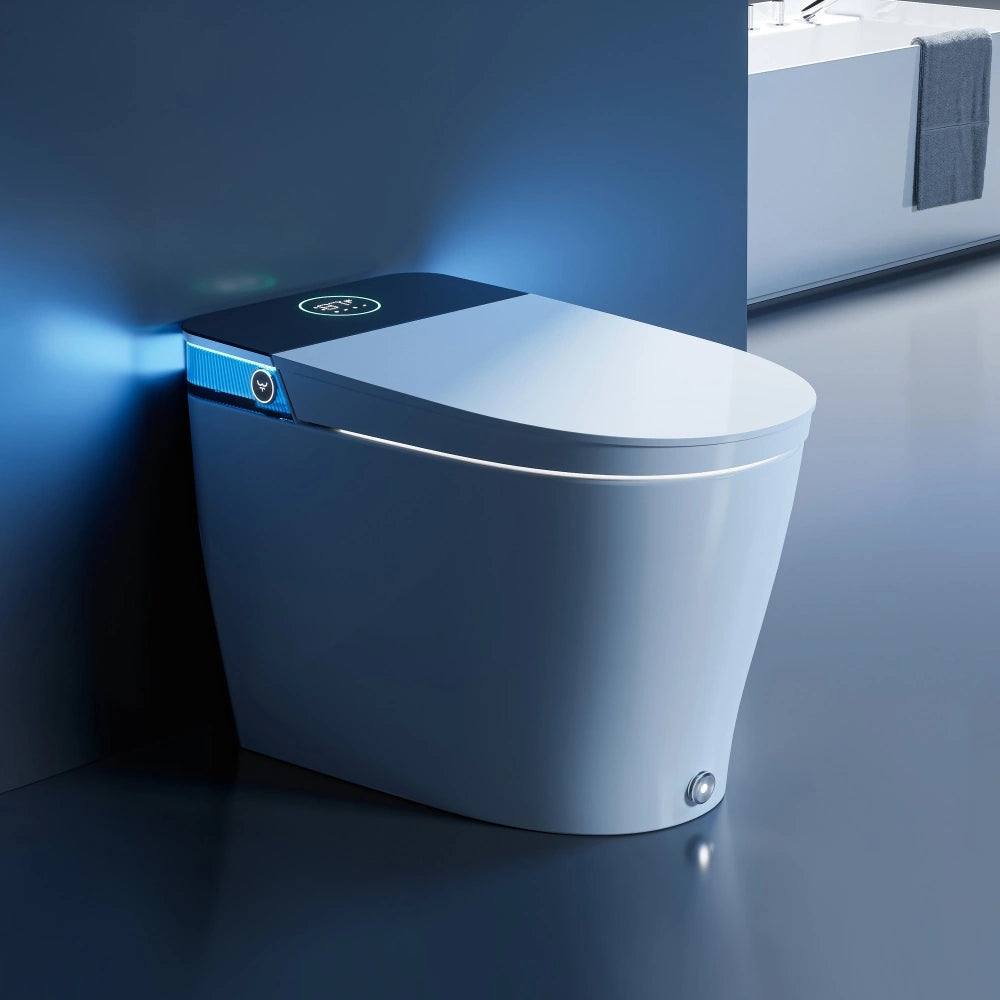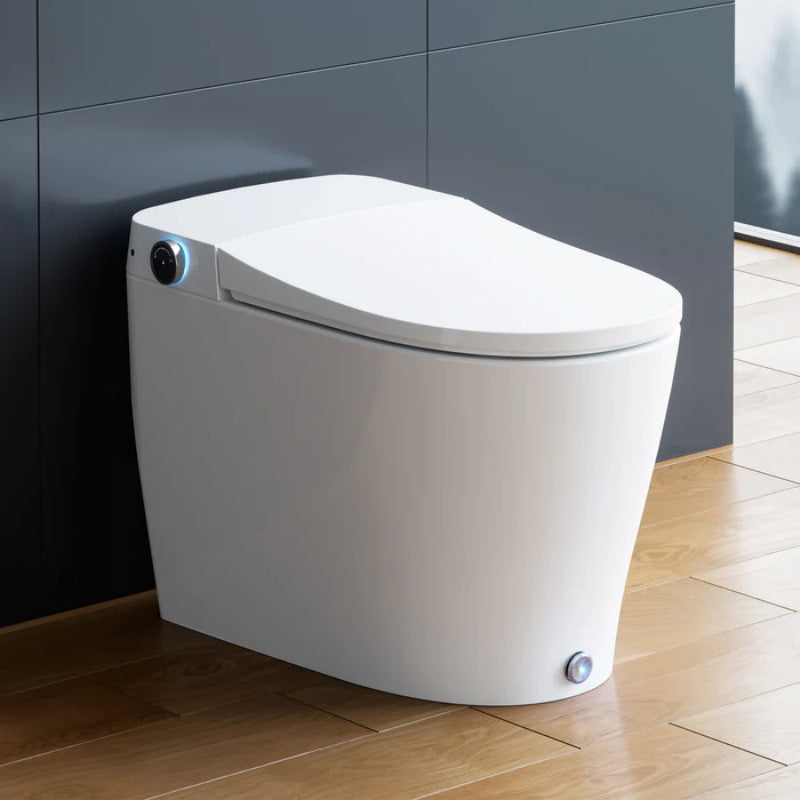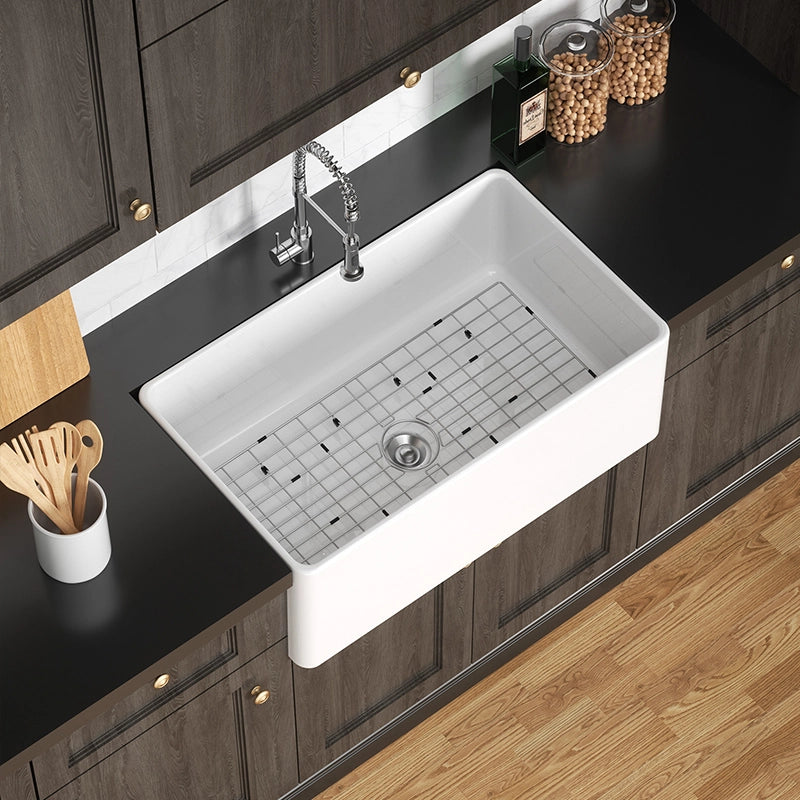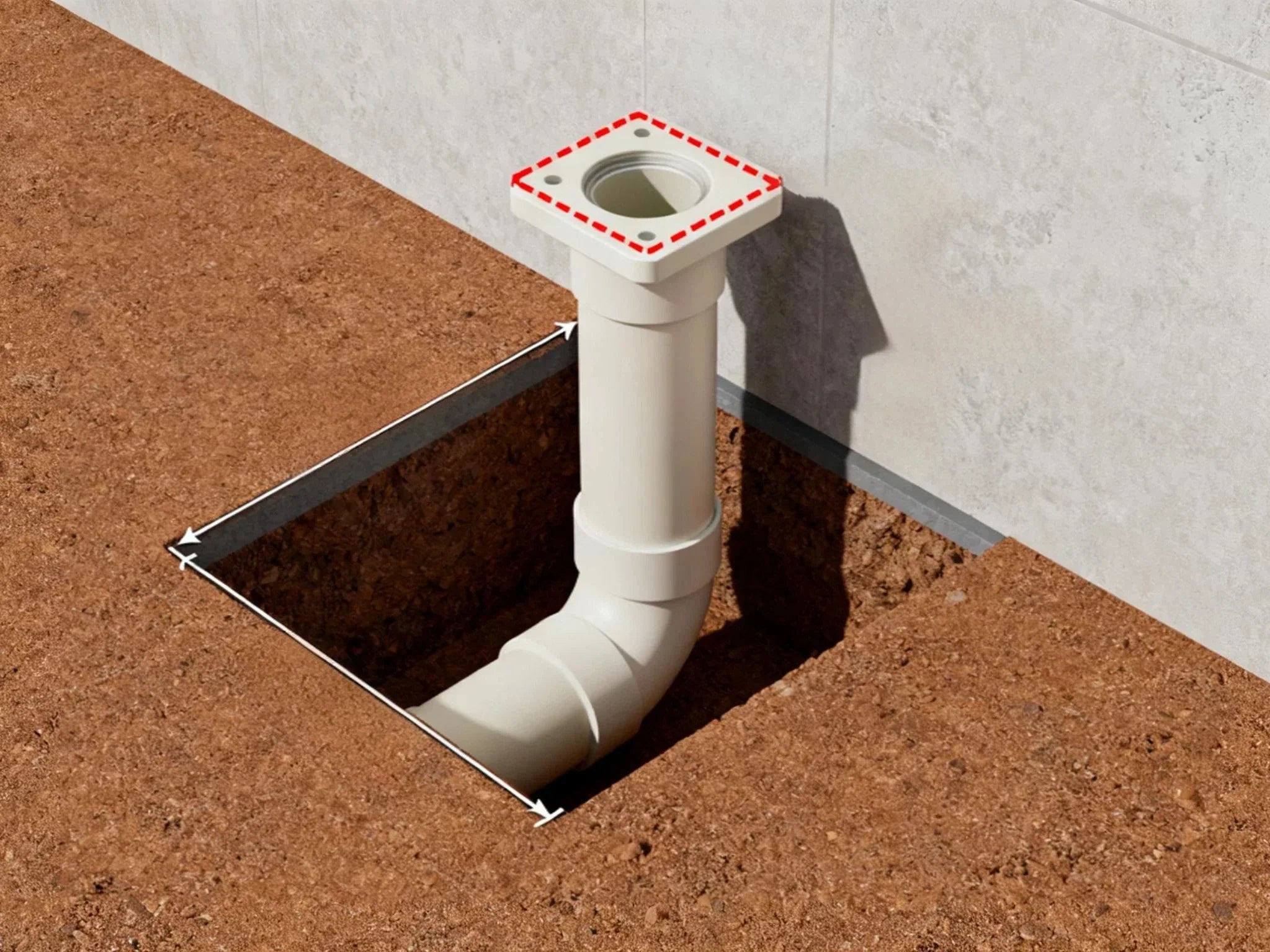A drop in tub lets you “drop” a bathtub shell into a custom deck or platform surround. That simple detail unlocks design freedom, deeper soaking, and a spa feel you don’t get from a standard alcove tub with a finished front. If you’re comparing a drop-in vs. alcove or freestanding tub, use this guide to get quick answers first, then go deep on dimensions, costs, installation, materials, and layout ideas. You’ll see where drop-ins shine—master suites, generous platforms, two-person soaking—and what to plan for—surround construction, waterproofing, and service access. Along the way, you’ll find pro tips, checklists, and practical steps so you can choose the right bathtub for your bathroom and install it with confidence.
Drop in tub: Quick answers and key specs
When considering a drop in bathtub for your bathroom, it helps to start with the essentials. From size and depth to placement and two-person options, understanding the key specs quickly gives you a clear picture of what to expect and how this style differs from alcove or freestanding tubs. This section breaks down the quick answers so you can plan your layout and decide if a drop-in bathtub is the right fit for your space.
What is a drop-in tub? Definition and how it differs from alcove/freestanding
A drop-in bathtub is a tub shell with a finished rim and unfinished sides. The tub “drops” into a framed platform or surround, and the rim sits on top of the deck for support. Because the surround is custom-built, you can choose the tile, stone, solid surface, or even wood look you want. This is the key difference from an alcove tub (a “shower-tub combo” style) that slides into a three-wall niche with an apron front, and from freestanding bathtubs that are finished on all sides and sit directly on the floor.
To put it simply: a drop-in is a built-in soaking vessel set into a surface you design; an alcove tub is a one-piece unit that fits into a three-wall opening; a freestanding tub is finished on all sides and stands alone.
Essential facts at a glance (size, capacity, placement)
-
Most drop-ins range from 60–72 inches in length and 30–36+ inches in width, with about 16–18 inches of water depth to overflow. That depth gives a better soak than many alcove soaking tubs.
-
Two-person configurations are common in whirlpool and air models. Many tubs are shaped to fit two bathers with headrests and armrests.
-
Placement is flexible: center of the room “island,” in a window bay, or as part of a corner platform.
Are drop-in tubs more expensive to install? Yes, in most cases. You need to build the tub surround, waterproof it, and finish it. That adds time and labor compared to a simple alcove install.
Who it’s best for (use cases and constraints)
A drop in tub favors larger bathrooms where the tub becomes a focal point and you want a custom aesthetic. It’s ideal for master suites, luxury remodels, deeper soaking, couples’ baths, and setups where you want deck-mounted fixtures and extra ledge space for toiletries. It’s less ideal for tight spaces, quick timelines, or strict budget installs where an alcove tub or a small freestanding soaking tub may make more sense.
Quick pros and cons
-
Pros: design freedom, spacious soaking, deck-mounted fixtures, high-end look, two-person options.
-
Cons: custom surround required, higher install complexity and cost, larger footprint, careful waterproofing and access needed.
Space planning, dimensions, and layout
Planning the perfect drop-in bathtub setup goes beyond choosing a tub; it’s about fitting it seamlessly into your bathroom. Here, you’ll find everything you need to consider standard sizes, water depth, and bather ergonomics. You may also explore clearance rules, deck placement, and layout options that make your bath both comfortable and easy to maintain.
Standard sizes, water depth, and bather ergonomics
Most drop-in bathtubs fall into these common footprints. The key is matching length and backrest angle to your body and the way you like to bathe. If you’re tall, a longer tub helps keep knees below the waterline. If you want deep soaking with less length, look for higher overflow placement and a steeper backrest.
-
Typical lengths: 60–72 inches (some compact at 54 inches, some extended beyond 72 inches)
-
Typical widths: 30–36+ inches
-
Typical water depth to overflow: 16–18 inches
-
Comfort notes: A gentle backrest angle (about 110–120 degrees) supports the spine; a molded neck notch or pillow helps with longer soaks.
Table: Common drop-in sizes and bather guidance
| Drop-in Tub Size | Best For / Notes |
|---|---|
| 60 × 30 in | Fits most standard rooms; good for single bather, compact deck |
| 66 × 32 in | Better for taller users; more shoulder room |
| 72 × 36 in | Generous two-person soak; needs a larger room |
The difference between alcove and drop in tub sizing is less about the shell and more about the surround. Drop-ins need extra deck area and clearance around the tub, which increases the footprint in the room.

Clearance and layout rules for islands and decks
Good layout keeps the tub comfortable to use and simple to service. Think about how you’ll get in and out, where the faucet lands, and how a pro can reach the pump (if any) later.
-
Leave an access panel large enough to service the drain, trap, and any pumps/controls. A clear opening of at least 12 x 18 inches is a practical target, larger if you have therapy features.
-
Support the rim fully on the deck and set the tub bed on mortar if the manufacturer calls for it. An even, solid base prevents squeaks and cracks.
-
Keep a safe ledge width (3–6 inches) to sit or rest items. Wider ledges are handy but can collect water; add a slight slope toward the tub.
-
Place deck-mounted spouts so the stream hits near the drain, not your back. Check spout reach and valve rough-in depth against the frame and finished surface.
-
Plan working space: at least 24 inches clear in front of the approach side, and safe pathways around an island.
Placement options: center, corner, window bay, or platform
A central “island” platform makes the tub a true centerpiece with 360-degree access and a resort feel. Corners save space while keeping a roomy bathing well and a strong look. A window-bay platform puts your soak under natural light, which many homeowners love. Against a half-wall is another option that allows hidden plumbing and niches without the closed-in feel of a full alcove enclosure.
Can a drop-in tub fit in a small bathroom?
It can, but plan carefully.
-
Minimum deck size: match tub rim size plus at least 3 inches on all sides for support and finish.
-
Door swings and circulation: ensure clear paths, especially around corners.
-
Code access: leave a service access panel to reach valves, traps, pumps, or GFCI outlets if you have a whirlpool or air bath.
-
Shower use: if you need a daily shower, an alcove tub with an enclosure is often more practical in small rooms than a drop-in.
Installation and cost: surrounds, labor, and timelines
How a drop-in surround is built (structure and materials)
Building the surround is a small construction project. You’ll frame a box or platform, install a sub-deck, waterproof the assembly, and apply the finish. The tub then drops into the cutout and rests on the deck.
Typical layers from the framing up:
-
Framing: treated lumber or engineered framing sized to support live load and a full tub (water + bather). Add cross-bracing where needed.
-
Sub-deck: exterior-grade plywood or cement board underlay.
-
Waterproofing: sheet membrane or liquid-applied membrane, with careful attention to seams and the tub cutout. Add backer board and waterproofing for any vertical aprons. Based on recommendations from the International Code Council (ICC), proper waterproofing are essential to prevent leaks and maintain long-term durability.
-
Finish surface: tile, stone slabs, solid surface, or sealed wood detail. Choose slip-resistant textures for any walking edges.
-
Access panel: discreet panel in a side apron or adjacent cabinet for plumbing, pump, and electrical access.
Cost drivers and budgeting
Think of a drop-in as two cost buckets: the tub shell and the platform. The platform often costs more than buyers expect, because it includes framing, waterproofing, finishing, and access work. Therapy features add electrical and sometimes extra structural support.
Cost breakdown by category (typical share of total project cost):
-
Tub shell: 25–45%
-
Surround framing and sub-deck: 10–20%
-
Waterproofing and finish materials: 15–30%
-
Plumbing and electrical labor: 15–25%
-
Contingency and code inspections: 5–10%
Prices vary by region and finish choices. Stone slabs and solid-surface decks can raise material and labor time. A simple tiled deck usually costs less. If you’re comparing a drop in tub vs alcove tub, expect the drop-in path to run higher because an alcove needs no separate deck and finishes faster.
DIY vs. pro install: skills, sequencing, and risk
You can DIY a drop-in if you’re comfortable with framing, waterproofing, and plumbing, but many homeowners hire a licensed pro to protect warranties and pass inspections. The sequence matters:
Step-by-step sequence
-
Rough-in plumbing and electrical (dedicated GFCI if whirlpool/air)
-
Frame the surround and check for level and square
-
Dry-fit the tub, confirm cutout sizing, spout reach, and overflow alignment
-
Install sub-deck and waterproofing system
-
Finish surfaces (tile/stone/solid surface), keeping the rim line true
-
Set the tub on mortar (if required), fasten per instructions, and seal the rim
-
Connect drain/overflow, supply lines, and test for leaks
-
Install access panel and final caulk; allow cure time before use
Tip: Avoid voiding warranties by following the manufacturer’s support and mortar-bed requirements. Always provide service access for pumps and controls.
Common mistakes to avoid
Cut corners here and you’ll pay later. The big mistakes are poor waterproofing at the deck and rim, not leaving access to the drain or pumps, weak rim support or missing mortar under the base, and decks without a slight slope toward the tub. Another easy miss is faucet rough-in—if the spout doesn’t clear the rim or the valves sit too deep after tile, you’ll have to open walls or the deck to fix it.
Design and customization: surrounds, finishes, and fixtures
Installing a drop-in bathtub involves more than just placing the tub itself. Tubs often require a custom-built surround, careful waterproofing, and precise deck finishing. In addition, bathtubs may need extra support for therapy features, electrical connections, or heavy stone surfaces, all of which affect labor, timelines, and overall cost.
Surround finishes: tile, stone, and wood considerations
The deck sets the tone. Natural stone slabs offer a clean, luxury feel with fewer grout joints. Porcelain tile gives styles from modern to classic with good durability. Solid-surface materials bring a seamless look and easy care. Wood accents are warm but need careful sealing and planned maintenance.
Finish comparison at a glance
-
Tile: wide style range, budget-friendly, grout needs upkeep, can be slip-resistant
-
Stone slab: premium look, fewer seams, higher cost, needs sealing
-
Solid surface/composite: seamless, easy clean, warm touch, higher material cost
-
Sealed wood details: warm and stylish, needs careful detailing to handle moisture
Deck-mounted fixtures and storage
Drop-ins shine with deck-mounted Roman fillers, hand showers, and valve sets. You can also integrate niches, ledges, and even a hidden storage panel. Check spout reach so the flow lands near the drain, and leave service access for valves. If your deck is thick (stone + backer), confirm your trim kit’s maximum deck thickness.
Style playbook: modern, transitional, and classic looks
Modern: a simple rectangular tub in a slab-stone deck with minimal seams and a wall-mount filler. Transitional: mixed materials—porcelain tile deck with a painted wood apron and an elegant Roman filler. Classic: beadboard apron, stone cap, and cross-handle valves. Corner setups can be cozy and dramatic; island platforms feel like a spa.
Are drop-in tubs out of style?
No. While freestanding tubs get buzz, drop-ins remain strong in larger North American homes and master suite remodels. The custom surround and deck storage keep them popular with people who want a spa-like experience and practical ledges for daily use. In design-forward baths, undermount and drop-in platforms are resurging for their clean lines and integrated look.
Materials and features: comfort, durability, and performance
Choosing the right drop-in bathtub goes beyond size and style—materials and features play a crucial role in comfort, durability, and overall performance. From acrylic and cast iron to solid-surface composites, each option offers different heat retention, weight, and maintenance needs, while therapy features like whirlpool or air jets may also enhance your bathing experience.
Tub materials explained
Choosing the shell material affects weight, heat retention, and maintenance.
Materials comparison (relative)
-
Acrylic: lightweight, warm to the touch, easy to clean, wide shapes, can scratch if abrasive cleaners are used but repairs are easier; good for most installs
-
Cast iron with enamel: very durable, excellent heat retention, heavy—may need extra floor support, enamel resists stains but can chip if struck
-
Composites/solid surface: premium feel, good heat retention, consistent color through material, heavier than acrylic, priced higher, seamless look in some designs
-
Fiberglass-reinforced plastic: budget-friendly, light, can show wear sooner than acrylic; often used in basic tubs

Therapy options: soaking vs. whirlpool vs. air bath
-
Soaking tub: quiet, simple, deep water. Best if you want silence and low maintenance.
-
Whirlpool: jets push water for targeted massage. Needs pump access and regular cleaning of jet lines; can be louder.
-
Air bath: small air ports around the shell create bubbles. Lighter feel than water jets, often quieter; needs blower and GFCI.
Which material is best for a drop-in tub? For most homes, acrylic balances weight, warmth, and care. For a legacy feel and high durable enamel surface with excellent heat retention, choose cast iron if your structure supports it. For a premium, seamless aesthetic, consider solid surface composites.
Insulation, water capacity, and energy considerations
A deep soak means more hot water. Insulate under and around the shell (where allowed) to slow heat loss. Check your water heater size: large tubs may need a bigger tank or a tankless unit to avoid running out mid-bath. Use a thermostatic valve on fillers to keep temperature steady. Aerators on hand showers and WaterSense-labeled fixtures help manage use without killing the experience.
Accessories: pillows, armrests, slip-resistant bottoms, heater upgrades
Small details raise comfort. Removable gel pillows protect the neck. Molded armrests support the elbows. Slip-resistant bottoms add safety. Some whirlpool models offer inline heaters to keep water warm longer without constant hot top-ups. Add a hand shower for easy rinse and cleaning.
Drop-in vs. alternatives: alcove, freestanding, undermount, corner
When choosing a bathtub, it’s important to understand how a drop-in tub compares with other options. From alcove and freestanding to undermount and corner tubs, each style differs in installation, footprint, design flexibility, and comfort. This section highlights the key differences so you can decide which type best suits your bathroom and lifestyle.
Head-to-head comparison: cost, space, and comfort
Feature comparison
-
Install cost: Alcove lower; Drop-in higher (custom surround); Freestanding varies; Undermount similar to drop-in; Corner decks vary by size
-
Footprint: Alcove most compact; Drop-in larger (deck space); Freestanding moderate with circulation space; Undermount similar to drop-in; Corner needs width but can save length
-
Design flexibility: Drop-in and undermount highest; Freestanding high; Alcove moderate
-
Accessibility for showering: Alcove best (with walls/enclosure); Drop-in not ideal for daily showers unless planned; Freestanding needs splash control; Corner depends on layout
-
Comfort: Drop-in and undermount often deepest; Freestanding varies; Alcove standard
When to choose each: scenario-based guidance
-
Choose an alcove tub when space is tight, you need a tub-shower combo, and you want a faster, budget-friendly install. If you ask “what is an alcove bathtub?”—it’s a tub with a finished front that slides into a three-wall niche, often used with a shower enclosure.
-
Choose a drop in tub when you want custom finishes, deck-mounted fixtures, deeper soaking, or a two-person design. It’s great for larger rooms and luxury decks.
-
Choose a freestanding tub when you want a sculptural focal point with simpler installation (no deck build). A small freestanding soaking tub can work in compact rooms if you have splash control.
-
Choose an undermount when you want the rim hidden under a solid countertop for a flush, modern deck. It needs precise cutouts and strong support.
-
Choose a corner platform when you want a spacious well without consuming the center of the room.
What’s the difference between drop-in and undermount tubs?
Both set into a platform or surround, but the mounting detail is different. A drop-in has a visible rim resting on top of the deck. An undermount has its rim fastened under a finished slab or countertop so the deck edge is what you see, creating a flush, seamless line.
Resale value and trends
Buyers connect “luxury” with a serene bath experience. In larger homes, well-done drop-ins and undermount platforms still appeal because they signal custom work and a spa mindset. Smaller homes often favor alcove practicality. Pick the type that fits your space and your daily use; that’s what supports value.

Maintenance, cleaning, and lifespan
Keeping a drop-in bathtub in top condition requires understanding proper maintenance and cleaning routines. Different materials—from acrylic to cast iron or solid surface—demand specific care to preserve finish, prevent mildew, and extend lifespan. This section covers tips, best practices, and what to expect in terms of durability so your bathtub remains comfortable and attractive for years.
Cleaning routines by material
-
Acrylic: clean with non-abrasive, non-solvent cleaners and a soft cloth. Rinse after each use and wipe dry to reduce water spots. Avoid scouring pads.
-
Cast iron/enamel: use gentle cleaners. Avoid dropping heavy items that could chip the enamel. For tough stains, a baking soda paste often helps without scratching.
-
Stone/tile decks: seal porous stone as recommended. Clean grout lines with pH-neutral cleaners and keep caulk joints fresh. Solid porcelain tiles often need less sealing but still want good caulk care.
Mildew and moisture control for decks and surrounds
Ventilation keeps surfaces dry and the air fresh. Run a bath fan vented outdoors during and for 20–30 minutes after a bath. Keep a slight slope on horizontal deck surfaces toward the tub to avoid standing water. Inspect and renew silicone where the rim meets the deck and at all plane changes to block moisture intrusion.
Repairs, warranties, and expected lifespan
A well-installed drop-in can last decades. Acrylic surfaces can be polished or spot-repaired. Enamel can often be repaired by pros if chipped. Pumps and blowers (if present) have their own life cycle and may need service mid-life. Read warranties and keep access to controls and plumbing. Good water quality and soft cloth cleaning stretch the finish life.
How long do drop-in tubs last?
-
Acrylic and composite shells: often 20+ years with proper care.
-
Cast iron/enamel: can last a lifetime if not abused.
-
Pumps/blowers: plan for replacement or service around the 10–15 year mark in many cases.
-
Maintenance matters: regular cleaning, sealed grout, and dry, ventilated rooms extend the whole system’s life.
Real-world examples, case studies, and pro insights
Seeing a drop-in bathtub in action helps bring design ideas to life. In this section, you’ll explore real-world examples, case studies, and professional insights. These practical examples highlight how thoughtful planning transforms a bathroom into a comfortable and stylish space.
Luxury spa deck in a master suite
-
Two-person air bath set into a stone slab deck with an integral ledge for candles and a niche for toiletries.
-
Deck-mounted filler with hand shower; spout aimed near the drain to reduce splash.
-
Focal-point placement under a window with a privacy shade and dimmable lighting.
Couples’ setup and comfort outcomes
-
Users report the extra shoulder room and deeper soaking depth make a clear difference compared to alcove tubs.
-
Two backrests and offset drains mean neither person sits on the drain. Inline heaters keep water warm longer.
-
The wide deck doubles as a bench for entry and a shelf for bath products, adding daily convenience.
Installer/designer tips to maximize results
-
Put the access panel where you can actually use it—often in a side apron or adjacent closet.
-
Rough-in the faucet after confirming final deck thickness and tub position. Dry-fit trim before finishing.
-
Add anti-vibration pads under pumps and secure lines to reduce noise transfer.
Lessons learned and mistakes to avoid
-
Don’t undersize the deck or cut the opening too big—follow the template and test-fit before finishing.
-
Keep tile edges level with the rim; avoid uneven “lippage” that traps water and looks sloppy.
-
Make sure your electrical circuits can handle therapy pumps and heaters; plan GFCI protection and labeling.
Tools and checklists
Planning and installing a drop-in bathtub is easier with the right tools and checklists. This section provides practical resources, helping you stay organized, avoid common mistakes, and ensure a smooth, worry-free project.
Interactive selector: Is a drop-in right for you?
Answer these quick prompts:
-
Room size: Do you have at least 66–72 inches of clear wall or island space and room for a 30–36+ inch width plus walking clearance?
-
Shower needs: Do you need a daily shower-tub combo? If yes and space is tight, consider an alcove.
-
Budget: Can you fund a custom surround with proper waterproofing and access?
-
Maintenance: Will you keep up with caulk and grout care?
-
Comfort: Do you want deeper soaking, two-person usage, or deck-mounted fixtures?
If you said yes to comfort, space, and budget, a drop in tub likely fits. If not, an alcove or freestanding model may be the smarter call.

Shopping checklist and spec sheet
Bring this list when comparing tubs:
-
Exterior dimensions (length and width), water depth to overflow, and total water capacity
-
Material (acrylic, cast iron, composite), finish color
-
Drain orientation (left, right, center) and overflow height
-
Therapy features (soaking, whirlpool, air), noise notes, inline heater option
-
Electrical needs (amps, GFCI) and service access location
-
Deck cutout template and rim width
-
Support requirements (mortar bed or not), tub weight (empty and filled)
-
Faucet type (deck-mount vs. wall-mount), spout reach, valve rough-in
-
Slip-resistant bottom, armrests, pillow, and warranty details
How much does it cost to install a drop-in tub?
-
The surround is the big variable: framing, waterproofing, and finishing can equal or exceed the tub’s price.
-
Therapy features add electrical labor and access needs.
-
Regional rates and finish choices shift totals; stone slabs cost more than tile.
-
Get at least three local quotes that include surround construction, plumbing, electrical, and inspection costs.
Can you shower in a drop-in tub?
You can, but it’s not typical unless the tub is integrated with walls and a proper enclosure. For open platforms, plan generous splash control, waterproof nearby walls, and slope the deck. If you want a daily shower, an alcove tub with a curtain or glass is usually more practical.
Sources, standards, and further reading
Codes and recommendations vary by region. Check your local building department and licensed trades before you install a drop in any tub type. For planning, these references are helpful:
-
International code basics: structural support, plumbing venting, and safe access clearances
-
Accessibility guidance for step-in heights, controls reach, and clear floor space
-
Water heater sizing and energy use for large-capacity tubs
-
Indoor air and moisture control for mildew prevention
-
Water efficiency tips for fillers and hand showers
FAQs
1. Are drop-in or alcove tubs better?
Choosing between a drop-in tub and an alcove tub really comes down to your bathroom layout, lifestyle, and priorities. If your space is limited, or you need a shower-tub combo for everyday use, an alcove tub is usually the smarter choice. It’s practical, budget-friendly, and quicker to install since the walls already provide support and finish. On the other hand, if you have a larger bathroom, want a deeper soak, or value a custom aesthetic with deck-mounted faucets and extra ledge space, a drop-in tub can transform the space into a mini spa. It offers more design flexibility, two-person options, and often a more luxurious feel. Ultimately, neither option is objectively better—the right choice depends on your room size, how you bathe, your desired features, and your budget.
2. Are drop-in tubs out of style?
Despite the growing popularity of freestanding tubs in design magazines, drop-in tubs remain a solid choice for many homeowners, especially in master suites and larger bathrooms. They provide a custom look that allows for integrated storage, deck-mounted faucets, and flexible finishes like tile, stone, or solid surfaces. Unlike freestanding tubs, drop-ins blend seamlessly with the surrounding décor and can feel more practical for everyday use. Designers still recommend them for those who want a spa-like experience without sacrificing function. The trend toward clean lines, undermount platforms, and integrated deck designs has actually revitalized interest in drop-in tubs, proving that they are far from outdated. They combine style, comfort, and utility in ways that freestanding models sometimes cannot.
3. What are the pros and cons of a drop-in bathtub?
Drop-in tubs offer many advantages for those prioritizing comfort, design flexibility, and ultimate relaxation. Tubs are typically spacious enough to accommodate two bathers, and a drop in tub allows for deck-mounted fixtures and fully customized surrounds that match your bathroom décor. You can also construct integrated niches, ledges, or storage for bath essentials, adding both style and practicality. However, there are trade-offs: a drop-in tub requires a custom-built surround, careful waterproofing, and a slightly larger footprint, which increases installation complexity and cost. Planning access for maintenance, pumps, or electrical components is essential. While they may not suit every bathroom or budget, for those with ample space and design ambitions, a drop-in tub delivers a luxurious, highly adaptable bathing experience focused on comfort and relaxation.
4. What does a drop-in tub mean?
A drop-in tub is essentially a shell that “drops” into a custom-built deck or surround, with the rim resting on top for support. Unlike alcove tubs, which have finished sides and fit into a three-wall niche, a drop-in’s sides are unfinished because the deck or platform becomes the visible finish. This setup gives homeowners and designers maximum flexibility over materials, colors, and the overall aesthetic. You can create a stone, tile, solid-surface, or even wood-look surround, tailoring the tub to your style and bathroom layout. Drop-in tubs often offer deeper soaking, wider benches or ledges for toiletries, and deck-mounted fixtures that make everyday use more convenient. They are a blend of luxury, comfort, and custom design.
5. What size do drop-in tubs come in?
Drop-in tubs come in a variety of standard and custom sizes to suit different rooms and bathing preferences. Typical lengths range from 60 to 72 inches, with widths from 30 to 36+ inches, giving plenty of room for a deep soak. Some compact models start around 54 inches, while extra-large versions can extend beyond 72 inches. Water depth usually sits between 16 and 18 inches to overflow, offering a more immersive bathing experience than many alcove tubs. Two-person models are also common, often with dual backrests and offset drains for comfort. When planning your install, it’s important to consider the cutout template, finished deck space, and surrounding clearance to ensure a perfect fit and ease of use.
6. What does an alcove tub mean?
An alcove tub is designed to fit into a three-wall recess, with a finished front apron. It’s the standard choice for bathtub-shower combinations because the walls provide natural support and allow for waterproof finishes like tile or acrylic panels. Alcove tubs are compact, efficient, and often more budget-friendly than drop-in tubs, making them ideal for smaller bathrooms or tight timelines. They are practical, easy to maintain, and usually quicker to install since no custom deck is needed. Alcove tubs may be shallower than drop-in tubs, but they work well for everyday bathing, especially if combined with a shower enclosure. This makes them a popular choice for family homes or rental properties.
References








Leave a comment
This site is protected by hCaptcha and the hCaptcha Privacy Policy and Terms of Service apply.